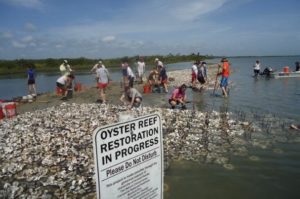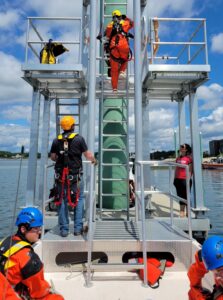HYANNIS – It is now predicted that more than half of the world’s population will live in close proximity to a coastline by the second half of this century.
The results of climate change, including sea level rise and an increase in storm frequency and intensity, has the potential to put almost 4 billion people at risk. 163 million people could face disaster in the U.S. alone.
One means of restoring the health and resiliency of coastal ecosystems is the use of living shorelines. The idea is cost–effective and quickly gaining popularity.
According to the National Oceanic and Atmospheric Administration, living shoreline is a broad term that encompasses a range of shoreline stabilization techniques along estuary coasts, bays, sheltered coastlines, and tributaries. It has a footprint that is made up mostly of native material, and incorporates vegetation or other living elements alone or in combination with some type of harder shoreline structure, like oyster reefs, for added stability.
Living shorelines maintain continuity of the natural land-water relationship and reduce erosion while providing habitat value and enhancing coastal resilience.
Oysters, which are farmed around the Cape, can each filter more than 75 gallons of water daily. When their reefs are allowed to grow, they serve as a physical barrier that helps reduce wave energy and minimize erosion.
It has been shown that living shorelines can outperform hardened shorelines during extreme weather events.























